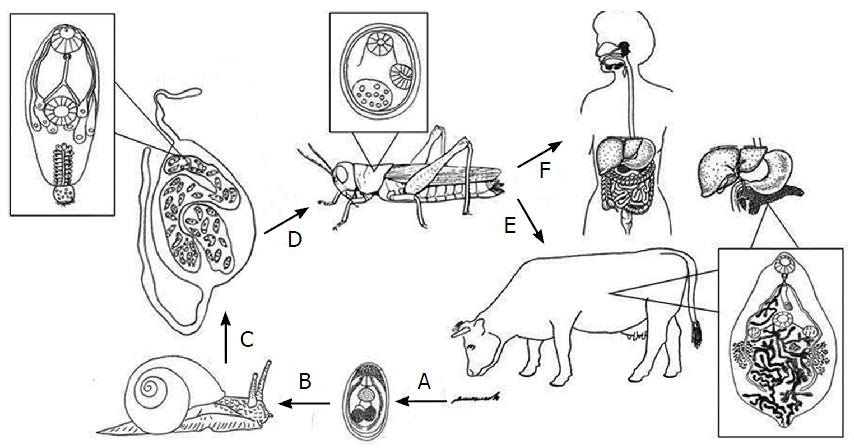Copyright
©The Author(s) 2016.
World J Exp Med. May 20, 2016; 6(2): 55-57
Published online May 20, 2016. doi: 10.5493/wjem.v6.i2.55
Published online May 20, 2016. doi: 10.5493/wjem.v6.i2.55
Figure 1 The life cycle of the pancreatic fluke Eurytrema coelomaticum.
A: Eggs containing formed miracidia are passed through the feces of definitive vertebrate hosts (ruminants) and ingested by the first intermediate host, the land snail Bradybaena similaris; B: Miracidia hatch into the digestive tract of the snails and develop successive generations of sporocysts (mothers and daughters) that produce microcercous cercariae; C: Daughter sporocysts containing cercariae are expelled from the snail in the terrestrial environment and ingested by the second intermediate host, insects from the order Orthoptera (grasshoppers and crickets); D: Encysted metacercariae are formed inside the body cavity of the insects; E: Insects containing metacercariae are ingested by ruminants. The metacercariae are excysted in the intestine and actively migrate to the pancreas, where they grow, mature sexually and produce eggs, which are passed in the feces; F: The accidental infection of humans occurs exclusively through the ingestion of insects, which is unlikely in Brazil.
- Citation: Pinto HA, de Melo AL. Comments on human eurytremiasis in Brazil. World J Exp Med 2016; 6(2): 55-57
- URL: https://www.wjgnet.com/2220-315X/full/v6/i2/55.htm
- DOI: https://dx.doi.org/10.5493/wjem.v6.i2.55









